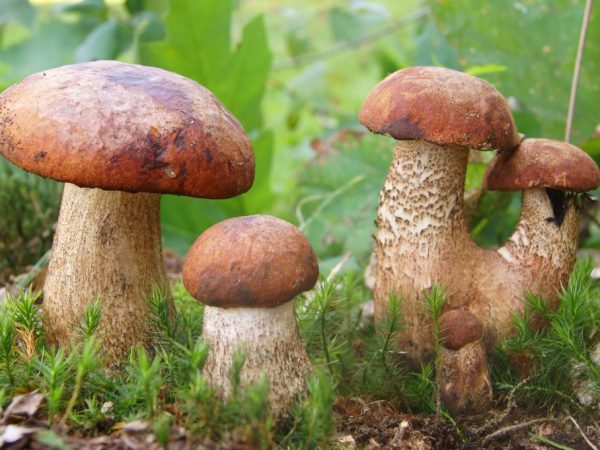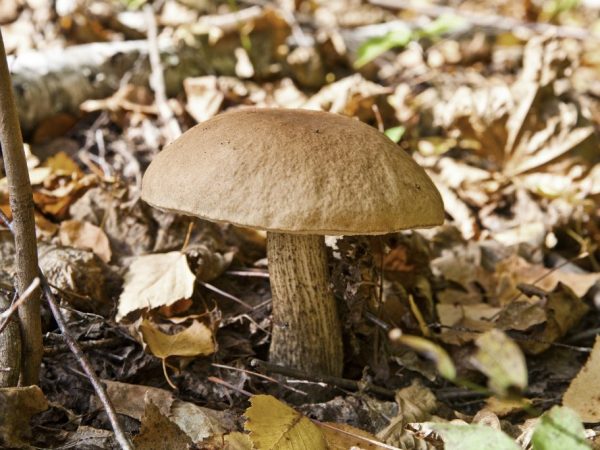Mushroom places of Dmitrovsky district
The forests near Moscow are famous for an abundance of mushroom places, where they harvest from early spring to late autumn. Some species are found even under the snow. Some of the most popular are mushroom places in the Dmitrovsky district.

Mushroom places of Dmitrovsky district
general characteristics
There is a mushroom map of the area with the best mushroom spots. A trip to the forest requires certain knowledge, skill and, of course, endurance. Take with you a flashlight and compass, a sharp knife and a ventilated basket (preferably made of natural material) so that the mushrooms do not stifle. Don't forget about personal protective equipment against mosquitoes and ticks. However, it must be remembered that they cannot be used too often, even in a healthy person, they can cause an allergic reaction.
All edible and non-poisonous (conditionally edible) mushrooms are suitable for consumption. Without heat treatment, you can eat only edible, or, as they say, absolutely edible species - russula, champignons and white. Not all types are suitable for salting. Some are better to boil or fry right away, while others are better to dry or freeze.
To get rid of the unpleasant bitter aftertaste, the conditionally edible group is soaked before the main cooking. The duration of soaking depends on the size and type of mushroom.
Poisonous ones are not suitable for cooking, therefore they cannot be collected. Their toxins cause poisoning and sometimes death. Some specimens (for example, pale grebe) are so poisonous that one touch on the surface leads to food intoxication. The toxins are absorbed into the bloodstream through the skin and cause vomiting, diarrhea and fever.
Flavor categories
In the Dmitrovsky district, mushroom places are famous for large harvests of a wide variety of species throughout the season, from early spring to the onset of stable cold weather in November.
According to their taste, forest organisms are divided into 4 categories:
- Edible mushrooms with excellent taste: chanterelles, milk mushrooms, porcini mushrooms and mushrooms (pine and spruce) - have a pronounced aroma and pleasant taste;
- Good tasting edible mushrooms: moss, boletus, boletus, polish and champignons - less intense aroma, characteristic forest smell and taste;
- Edible mushrooms, medium flavor: wave (white and pink), milk mushroom (aspen, black), honey mushroom (real), boletus, morel, stitching.
- Usable mushrooms with a mediocre taste: oyster mushroom, ram mushroom, raincoat, honey mushroom (summer and meadow) have a specific taste and weak aroma.
For haute cuisine, the first two categories are used more - they are suitable for hot first courses, second or side dishes, etc.
Conditionally edible (edible mushrooms with a mediocre taste) are not a priority in cooking. Most often they are used for pickling and pickling, with the use of additional spices to enhance the taste and aroma.
Early spring group
The first to appear in this area are spring pets and sarcocyths. They do not differ in their bright aroma and taste. But after winter vitamin deficiency, they are well suited for replenishing the norm of vitamins and minerals in the body.
After them, the following spring species appear:
- discina thyroid;
- sclerotinia;
- strobiluriuses;
- raincoats;
- honey mushrooms;
- oyster mushrooms.
Raincoats and morels with lines appear in May, on good nutritious soil in the deciduous zone, in coniferous thickets and in old willow trees. Their caps quickly increase in size after the first warm spring rains and it is almost impossible not to notice them on the lawns - they are simply striking.
Irina Selyutina (Biologist):
The most common type is considered to be ordinary lines. It belongs to the 3rd category of edibility and is, accordingly, an undoubtedly edible species. It is with the lines that all cases of poisoning are associated, which ended in death. Only in 1967 was it possible to establish that the cause of the poisoning is a special toxin - gyromitrin, and not the mythical Helvelic acid. According to mycologists, the amount of gyromitrin in line apothecia is somehow related to the conditions of development or the characteristics of the strain. It has been established that by its nature of the effect on the body, gyromitrin is quite comparable in the toxins of the “forest killer” - the pale toadstool.
Spring meadow mushrooms appear under young grass, on wet soils and in meadows, the myceliums of which will bear fruit until autumn. Oyster mushrooms, on the contrary, prefer fallen needles rather than grass, and delight their adherents with pristine beauty.
Summer varieties

The area is famous for its mushroom spots
This area in the first summer months is famous for a huge number of different types of mushrooms. The most popular are:
- boletus ordinary and green;
- boletus;
- aspen mushrooms;
- white;
- forest mushrooms;
- summer mushrooms, field and meadow mushrooms;
- flywheels;
- reindeer rogues;
- milk mushrooms;
- mushrooms.
Irina Selyutina (Biologist):
In the deer spit, there are varieties that differ in the color of the cap - fawn, ash gray. In the Moscow region, from mid-August (sometimes even earlier) and until early September, it is occasionally found with a plyut with a kind of golden hat. It grows on rotten stumps, usually singly.
It is possible to confuse the deer with its edible relatives from the genus of Plute - the lion-yellow spit and the willow spit. It is completely safe. However, the deer mushroom (as this mushroom is often called) has counterparts from the Entoloma clan. These representatives of the mushroom kingdom are poisonous. They can be distinguished from spits by the plates adhered to the stem of the fungus, while in spits they hang freely.
August and early autumn are the most productive. You don't have to make any special efforts to collect a full basket of butter or honey mushrooms, near the highway, without even going far into the forest.
Autumn varieties
The following mushrooms are typical for autumn harvests in this area:
- white and black milk mushrooms;
- mushrooms are real;
- autumn mushrooms;
- flywheels.
Honey mushrooms actively grow on old mossy stumps, on fallen tree trunks. This direction (Dmitrovsky district) is famous for large harvests of different types of honey agarics every year. They grow in large groups and having found such a family it is easy to collect a full basket. It is better to take only hats, because honey agaric legs are thin and have no use.
Species not edible
Poisonous forest organisms grow in this area. You need to know what they look like so as not to mistakenly put them in the basket.
Inedible and poisonous include:
- fly agaric;
- toadstools;
- Satanic;
- bile;
- yellowing champignon.
Poisonous mushrooms, gray float and common veselka are characteristic of this area. Less common are the luminous talker and paneolus (dung beetles).
The main rule of all mushroom pickers is not to touch unfamiliar or dubious forest organisms with your hands.
White noble mushroom is often confused with satanic or bile.But poisonous species give out a bitter taste and unpleasant aroma. The king of the forest, white, never changes the color of the pulp, even when dry it remains white. And in bile, it becomes yellowish in air. But the satanic one differs in that the boletus cannot have legs of such impressive dimensions.
Toadstools are of many types. But the most dangerous among all species is the pale toadstool. Its toxins are so aggressive that they penetrate even nearby growing mushrooms and make them poisonous.
Where is it better to collect
Studying carefully the mushroom map of the area, you can highlight several especially interesting places for picking mushrooms in the Dmitrovsky district:
- Dmitrovskoe highway in the direction of the village of Iksha: to collect a good harvest of chanterelles, aspen and boletus, you should go in this direction and before moving, in the village, turn to st. Technological.
- village Khoroshilovo: there is a large forest near it. This is the direction in which there are usually many summer and autumn mushrooms, russula and mushrooms. White and boletus mushrooms appear in this forest in July. Also there you can find waves and butter.
- the Klubish river, which flows between the villages of Staro and Khoroshilovo: along its banks, mushroom pickers gather full baskets of mushrooms, mushrooms, honey agarics. You can get there along the highway by a regular bus that runs on schedule from the bus station or by car along Leningradka and M11, towards MMKA 107. At the exit from M11, go along the small circle to the village itself.
Conclusion
There are many mushroom spots in the Dmitrovsky district. For a quiet hunt, you need to dress for the weather, use protective equipment and a stick to search for mushrooms in the grass. Be sure to have a small first-aid kit with you (including regularly taken medications with their daily supply), water and a snack, a charged phone and a navigator. For beginners, you will need a mushroom card so as not to wander in vain for a long time. No need to pick poisonous mushrooms. Keep order: do not litter, break bushes or trees, do not light fires in drought, so that a fire does not start.



